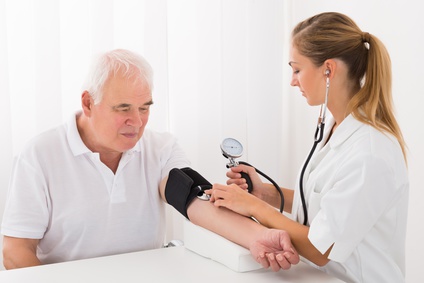Adding new medication in moderate doses to control hypertension conveniently maximizes efficacy, reduces adverse effects and minimizes costs, among other advantages. On the flipside, patients having to remember a whole list of drugs and their combination will often lead to non-adherence or forgetfulness. The latter has been shown not only by dedicated trials, but also by studies on renal denervation.

This new study takes us back to the old school approach: maximizing antihypertensives, which is the simplest and most manageable strategy vs. constantly adding small doses of new drugs (at least in elderly patients).
The SPRINT study supports intensifying medication in hypertensive adults. Notwithstanding, guidelines have differed on their preferred strategy. Europe proposes the combination of at least 2 drugs and no limits to achieve our target, and except for high-risk patients, the US does not propose a specific strategy.
Here is where we should wonder: what is more important, the strategy or reaching our target? Both solutions to this problem have pros and cons, which is why reaching our target should remain our priority, and non-compliant patients will hardly meet their target.
With elderly patients already on several drugs who might also be cognitively deteriorated, maximizing doses and simplifying their scheme seems to be the most practical thing to do.
This study assessed 178,562 hypertensive patients (>130 mmHg) ≥ 65. They were all on at least one antihypertensive, at less than maximum dose between 2011 and 2013. Drug mean was 2.
Read also: Drug-Eluting Balloons Find Their Niche.
25.5% of the population intensified their therapy adding one drug, while the remaining 74.5% maximized one of the drugs already indicated, without adding any other drug to their scheme.
After 3-month followup, patients who had maximized doses had more chances of maintaining control or reaching the same level of patients who added one new drug (65.0% vs 49.8%). This difference was maintained after multiple adjustments and results were true also at 12 months.
To be fair, patients who added one new drug did achieve a more pronounced reduction that was maintained at 12 months. In absolute terms, this reduction reached 1 mmHg.
Read also: More Keys to Define Moderate Aortic Stenosis.
Patients not being able to maintain higher doses because of adverse effects conceals the fact that patients will not adhere to complicated schemes because they forget to take their drugs.
A mere 1 mmHg difference reveals both strategies are adequate. Physicians are the ones in charge of assessing patients and opting for one or the other option.
Original Title: Adding a New Medication Versus Maximizing Dose to Intensify Hypertension Treatment in Older Adults : A Prospective Observational Study.
Reference: Carole E Aubert et al. Ann Intern Med. 2021 Oct 5. Online ahead of print. doi: 10.7326/M21-1456.
Subscribe to our weekly newsletter
Get the latest scientific articles on interventional cardiology





